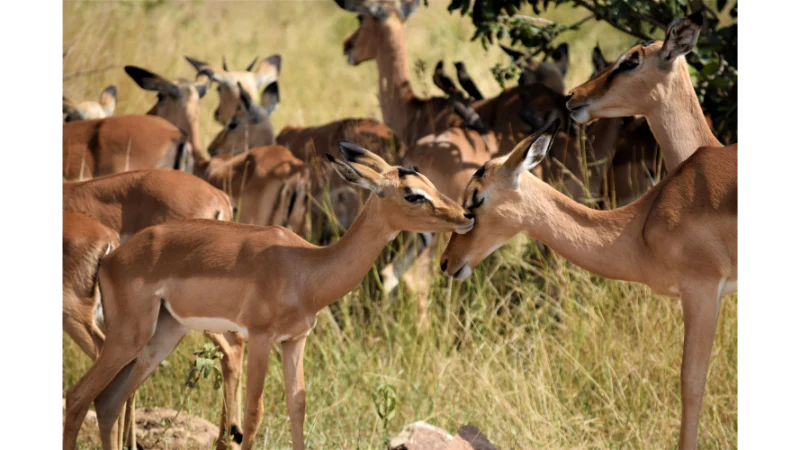When most people think of Rajasthan, images of majestic forts, golden deserts, and regal palaces come to mind. Yet, beyond its royal heritage and architectural grandeur, the state harbors an equally enthralling side—its thriving wildlife. With diverse ecosystems ranging from arid scrublands to dense forests, Rajasthan is a treasure trove for nature lovers and wildlife enthusiasts. The growing popularity of Rajasthan Wildlife Tourism invites travelers to venture deep into the state’s untamed heart, where nature still reigns supreme.
A Hidden Wilderness in the Land of Kings
Rajasthan Wildlife Tourism is more than just spotting tigers. It offers a holistic experience of the region’s ecological richness. The state is home to several national parks, wildlife sanctuaries, and protected areas that host a wide range of fauna—tigers, leopards, desert foxes, chinkaras, blackbucks, crocodiles, and hundreds of bird species.
Ranthambore National Park: The Tiger Kingdom
Arguably the crown jewel of Rajasthan’s wildscape, Ranthambore National Park is one of the best places in India to see the majestic Royal Bengal Tiger in its natural habitat. Spread over 1,334 square kilometers, the park’s terrain—a mix of hills, lakes, and dry deciduous forests—makes for an unforgettable safari experience. Apart from tigers, visitors can encounter leopards, sloth bears, hyenas, and marsh crocodiles. The Ranthambore Fort within the park adds a historical dimension, blending wildlife and heritage seamlessly.
Sariska Tiger Reserve: A Comeback Tale
Nestled in the Aravalli Hills, Sariska Tiger Reserve offers a fascinating tale of revival. Once nearly devoid of its tiger population, Sariska has seen successful reintroduction efforts. Today, the reserve is home to tigers, leopards, jackals, and antelope species like sambar and nilgai. The nearby Kankwari Fort, perched inside the reserve, provides panoramic views and a sense of history intertwined with nature.
Keoladeo National Park: A Birdwatcher’s Paradise
Formerly known as Bharatpur Bird Sanctuary, Keoladeo National Park is a UNESCO World Heritage Site and one of the world’s finest bird sanctuaries. A vital wintering ground for migratory birds, it sees the arrival of species from as far as Siberia and Central Asia. Birdwatchers can spot over 370 species including cranes, pelicans, herons, eagles, and the elusive Siberian crane. Whether you explore it on foot, bicycle, or rickshaw, every visit offers new avian surprises.
Desert National Park: Nature in the Thar
The Desert National Park, located near Jaisalmer, showcases the raw, rugged beauty of the Thar Desert. Unlike the typical jungle, this park is a unique ecosystem that supports wildlife adapted to extreme conditions. You may spot desert foxes, monitor lizards, and the endangered Great Indian Bustard. The stark landscapes, dotted with fossilized tree trunks and sand dunes, offer an offbeat wildlife experience that’s both captivating and educational.
Tal Chhapar Sanctuary: Home of the Blackbuck
In the Shekhawati region lies the Tal Chhapar Sanctuary, a grassland ecosystem that resembles the African savannah. Known for its large population of graceful blackbucks, the sanctuary also shelters desert cats, foxes, and several bird species like harriers, eagles, and skylarks. The open grasslands make it an ideal location for wildlife photography and birdwatching.
Mount Abu Wildlife Sanctuary: A Cool Escape
Located in Rajasthan’s only hill station, the Mount Abu Wildlife Sanctuary is a verdant contrast to the state’s arid regions. Its sub-tropical forests provide refuge to animals like leopards, jungle cats, porcupines, and langurs. The cool climate and rich floral diversity—including orchids and bamboo forests—make it a unique inclusion in Rajasthan’s wildlife circuit.
The Role of Rajasthan Wildlife Tourism in Conservation
With rising interest in Rajasthan Wildlife Tourism, many reserves have improved infrastructure and adopted eco-friendly practices. Local communities are increasingly engaged in conservation activities, gaining livelihoods from guiding, hospitality, and handicrafts. Tourism revenue contributes to wildlife protection, habitat management, and anti-poaching measures.
However, responsible tourism is crucial. Visitors must follow park rules, avoid disturbing animals, and prioritize eco-conscious stays. Sustainable wildlife tourism ensures that these wild spaces remain intact for future generations.
Planning Your Wildlife Adventure in Rajasthan
If you’re keen on exploring Rajasthan’s natural heritage, here are a few travel tips:
- Best Time to Visit: The cooler months from October to March offer optimal wildlife sightings.
- Safari Options: Most parks offer both jeep and canter safaris. Advance booking is recommended, especially for popular parks like Ranthambore.
- Stay Options: From forest lodges to eco-resorts, Rajasthan offers a range of accommodations close to wildlife zones.
- Local Guides: Hiring trained guides not only enhances your safari experience but supports local employment.
Conclusion:
Rajasthan’s wild heart beats strongly beneath its royal façade. Whether it’s tracking a tiger in Ranthambore, watching flamingos in Keoladeo, or exploring the arid wilderness of the Thar, Rajasthan Wildlife Tourism offers an unmatched blend of adventure, biodiversity, and cultural richness. So pack your binoculars, lace up your boots, and head into the wild—you’ll discover a side of Rajasthan that’s just as regal as its palaces, yet deeply rooted in the rhythms of nature.


